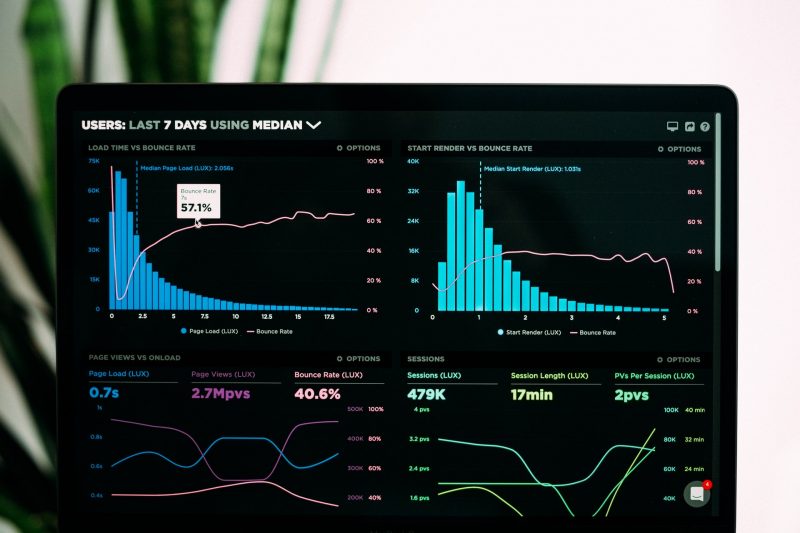Seeing the impact of your work is always motivating after all the effort you put into planning, producing, recording, editing, and publishing your podcast. Podcast analytics or stats can help you get a better understanding of your work and ideas to push your podcast further. In its simplest form, podcast statistics show you how many people listened (or downloaded) each episode.
On top of the plain download stats, you can determine which podcast platform (Apple Podcasts, Spotify, and others) performs better, how many people are listening to each episode over time (on publishing day, first 30 days, first 90 days, etc.), and what type of devices your audience is using.
In this article, we will review the best podcast analytics and statistics tools, explain why they are important, and show you how they can help you grow your show even more.
The different types of podcast analytics tools
- Podcast hosting platforms – The majority of the podcast hosts provide analytics tools built into their platforms. In addition to global stats on downloads / listens, you should also expect more advanced metrics. For example, listens over time, completions (full episodes heard), and the average duration of listening to each episode by your audience. We’ll share more on that later in this article.
- Your podcast website – Having a podcast website is a great idea. Beyond serving as the main “hub” of your show, it will also allow you to track a bunch of information around analytics such as how many people view the episode pages, play the episodes, etc. With website analytics you can also find the source for every visit, so you can learn where your audience is coming from (e.g. organic search, social channels, referrals, emails, etc.).
A website also helps increasing your chances to be found online – there are more than 5 billion searches on Google alone every day. To get more potential and exposure on search engines, a website is a must. - Podcast analytics/tracking tools – Podtrac and Chartable are tools that offer analytics specifically around podcasting. These services are usually included as part of some podcast hosting platforms & apps, but you can implement their tracking manually if you prefer.
- Podcast apps / platforms – There are also many platforms that provide insights and stats that are unique to their own platform. For example, Apple provides data via the Apple Podcasts Connect tool. Spotify is offering stats via the Spotify Podcasters dashboard and Google does the same with their “Podcast Manager” tool.
(One thing that you should remember about Spotify – since they self-host all your episodes separately from where your feed is hosted, these stats would be counted separately as well).

Important podcast analytics stats to keep an eye on
Only you know your own podcast and your own goals. It’s up to you to decide which metrics are truly relevant and which aren’t as much. Having said that, you can gather a multitude of key insights from your podcast analysis tools –
Downloads: You can learn a great deal by comparing the plain number of downloads from each of your episodes and taking advantage of that data when planning new episodes.
Downloads over time: It’s important to track your episodes’ average performance over time. There are usually separate stats for the first day, week, month, and first 60/90 days, so you can compare performance across episodes. If you run a daily podcast or one that is only relevant on the publication day, this won’t matter as much, but it’s still a useful insight.
Platforms: What platforms do most people use to listen to your podcast? Learn if your traffic comes from Apple Podcasts, Spotify, Google Podcasts, or perhaps from a player included on your website.
Location: Find out which countries, states or cities are most relevant. Discover where your audience comes from. You can make use of that information to target your ideal listeners with ads or other marketing tactics.
% Played on each episode: Some tools can provide this metric – It’s important since you can see if your episodes are really appealing to your audience. Downloads can be a misleading number, since you don’t know if people stayed for one minute or one hour. However, when you have the average percentage played for each episode, you can try to learn how your episodes can be improved over time.
Subscribers: What about subscribers? Unfortunately this is not an insight that can be easily determined. It’s hard to track subscribers since RSS is an open medium and anyone can subscribe with almost any app. Many hosts will try to give you an estimate based on your initial downloads per episode.
More podcast analytic tools
Chartable, Podtrac, ListenNotes and Podchaser are just a few apps that can help you gain greater insight into not only podcast analytics, but also the podcast market in general. Podcast directories such as ListenNotes and Podchaser have almost all podcasts listed in them. They also include some basic statistics for each show and global data.
Chartable and Podtrac provide insights based on podcast categories. So you can easily learn more about your niche and how your podcast ranks within your own category.
Looking for more ways to grow your podcast?
You can read one of our articles about growing your podcast.
Furthermore, don’t forget to check out our own platform – Podcastpage.io. It is one of the best ways for you to make the most out of your podcast.



